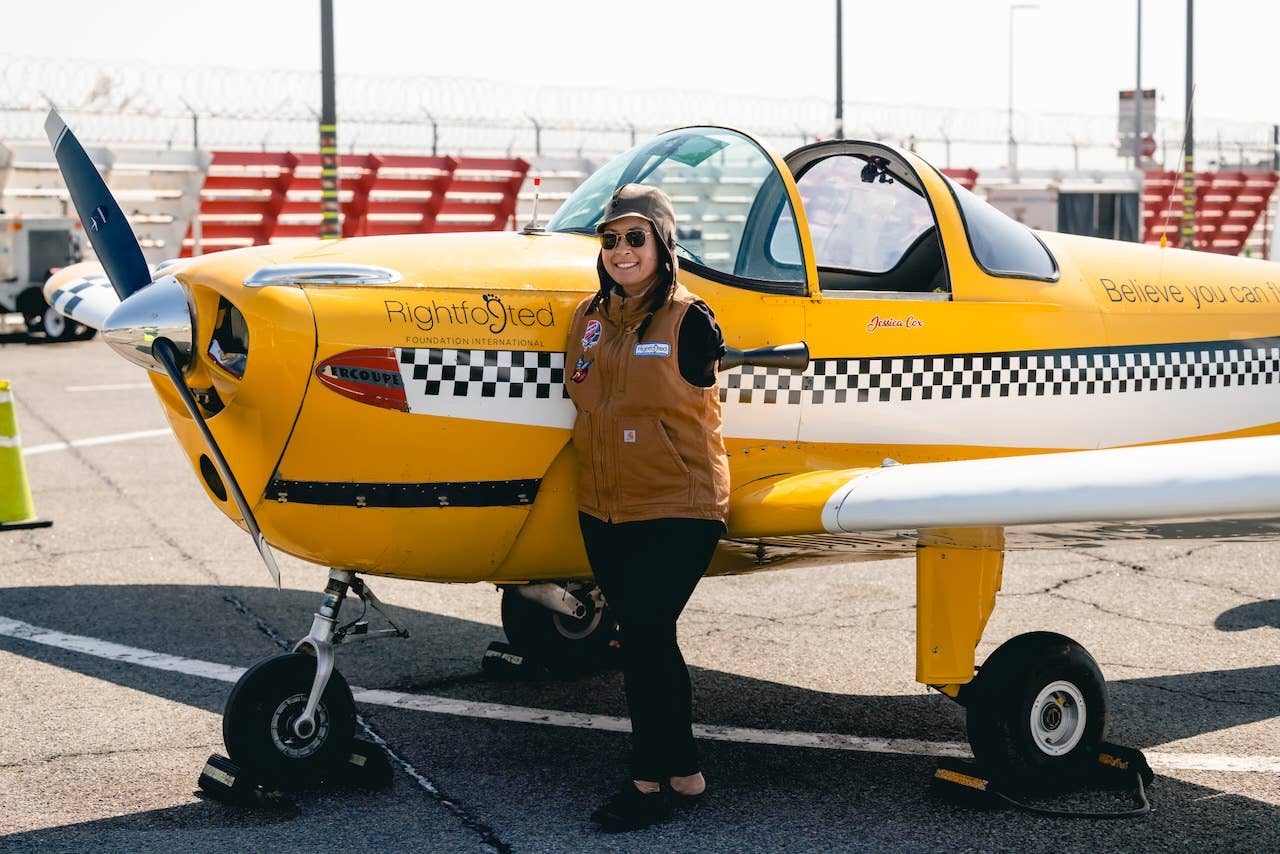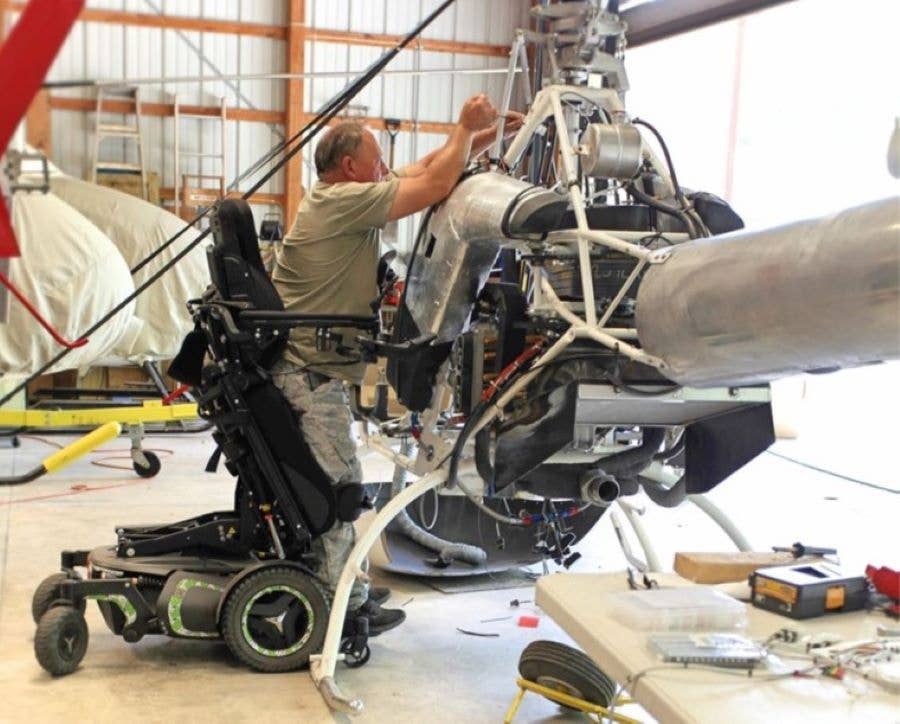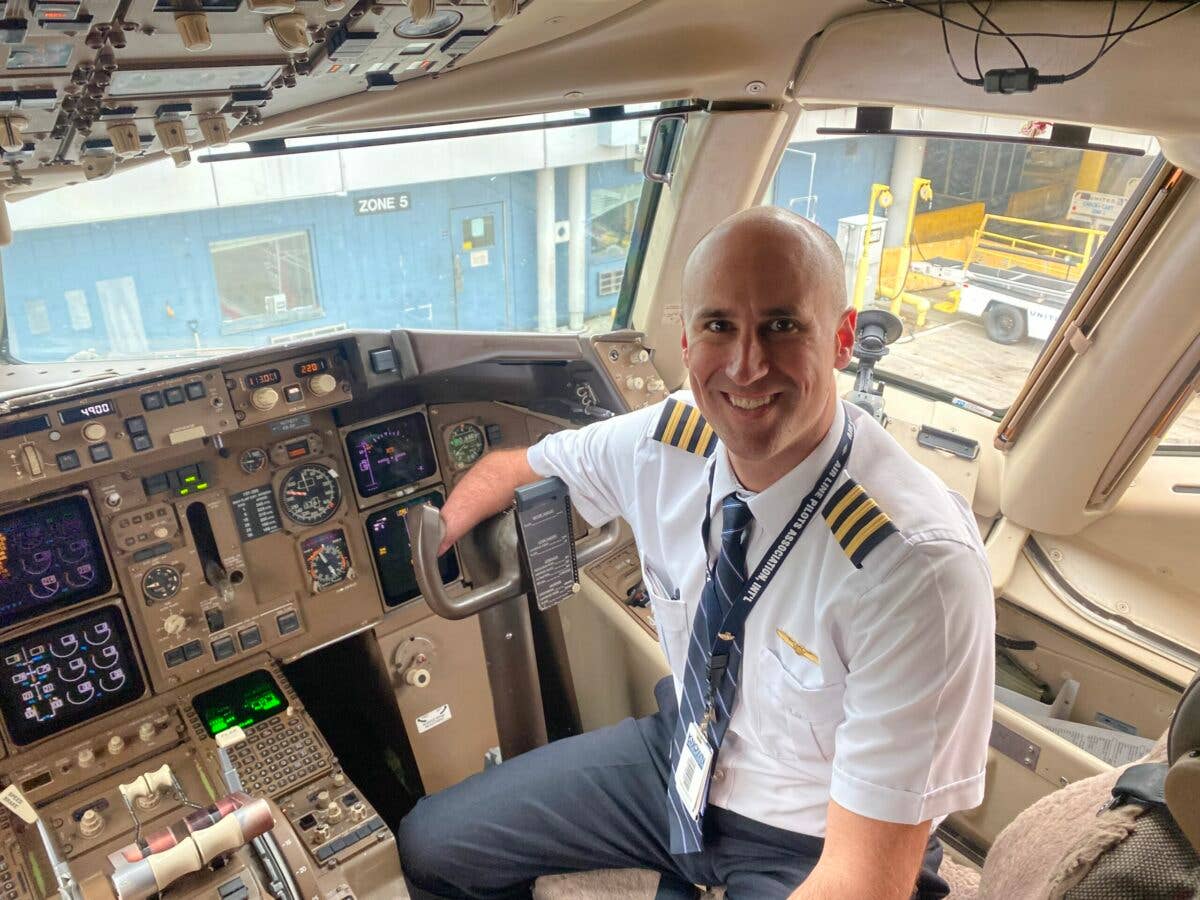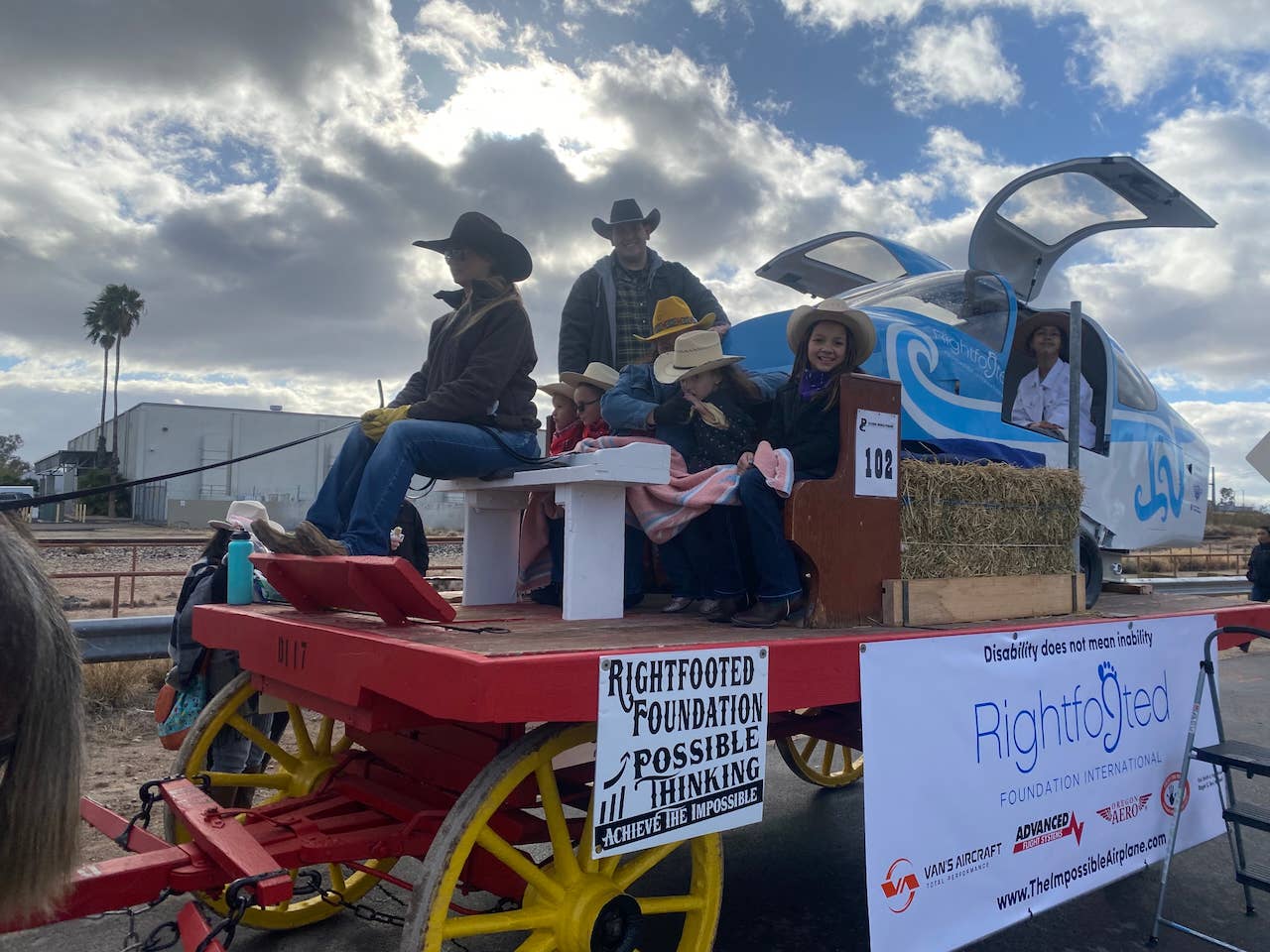AirVenture Is Not Just About the Airplanes
The annual EAA air show is like a big family reunion—a place where people come to belong, including those with disabilities.
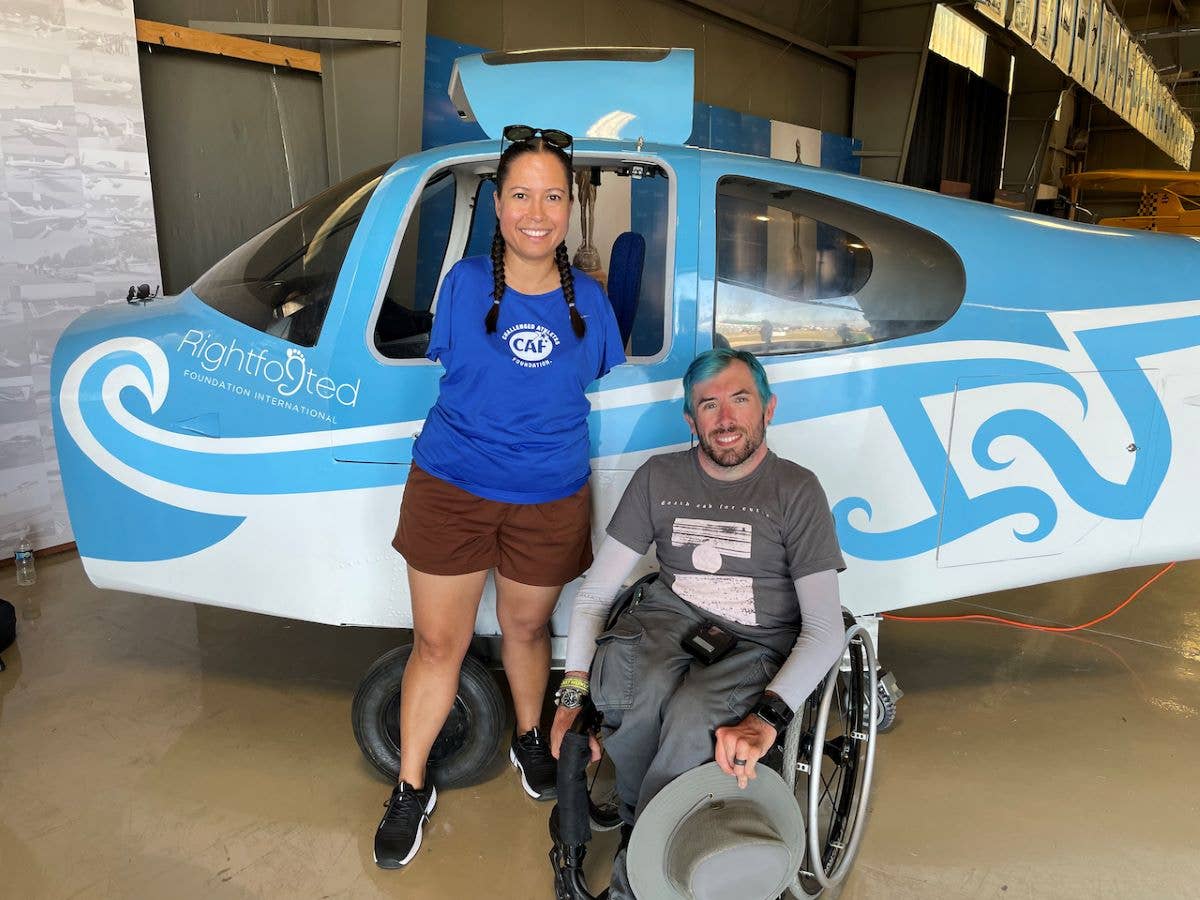
Jessica Cox and Eric Ingram pose in front of the test fuselage for The Impossible Airplane at AirVenture 2023. [Courtesy: Jessica Cox]
I have gone to EAA AirVenture almost every year since 2009. My very first time I remember standing near the flight line watching the 100 Beechcraft Bonanzas come flying in. I remember landing on the taxiway feeling like something wasn’t quite right because we were not on the runway. I remember being swarmed by the media as soon as I stepped out of the Ercoupe. That was my introduction to this special community in aviation. I found a family that shared my passion.
When it comes to AirVenture, many often say “we come for the airplanes but stay for the people.” This rang true for me this year. I usually deliver two speeches at the annual event, and so there were people in the audience who have heard me speak every year. This is special because people came up to me and said they were at AirVenture when we announced The Impossible Airplane Project and were so glad to see how much we have accomplished since then. One family showed me a picture taken of me with their 7-year-old a few years back. They then told me that the little boy in the photo was now the teenager towering over me.
AirVenture is like a big family reunion—a place where people come to belong. What I realized this year is that we can make it such a place for those with disabilities as well. We saw several hundred fans come through our booth this year, but only four of them—all pilots— had disabilities. I talked to these four, and they expressed their hope of finding more community at AirVenture. They were happy to see our booth, but they were looking for more. We were set up to exhibit the technology behind The Impossible Airplane but not specifically focused on community-building. I wondered what such a booth would look like at AirVenture. Could there be a space that would highlight the stories of people with disabilities in aviation?
I was demonstrating the foot controls when a woman without hands asked what I do about tuning the radio and transponder knobs. I have no issues with those aspects, but I saw that she didn’t have fingers, so I understood why she needs support in that area. I showed her how I have a death grip, as well as fine motor skills, and she demonstrated how she grips between her two shortened forearms. She wants to start learning as a student pilot, but the lack of technology for the radio control is holding her back.
Then there are the pilots with hand controls. We attended the Able Flight barbecue after-party and saw at least 15 pilots in wheelchairs. My friend, Clayton, was flying in a Vision Jet with hand controls. As the first paraplegic with a jet rating, he had a lot of people going up to his jet because they were curious about his designs.
Similar to the vintage, homebuilder, and warbird areas, I would love to see a space dedicated to pilots with disabilities where we can share experiences and ideas. When I first attended an amputee support group, I felt like I found special people who understood what it was like to be different. There were the how-to questions, but deeper than that was the feeling of being seen and understood. They “got me” simply because they have been in my shoes.
I am excited about next year’s AirVenture and would love to work toward creating a more meaningful space that connects my two greatest passions—aviation and disability advocacy. I look forward to greater things ahead!

Sign-up for newsletters & special offers!
Get the latest FLYING stories & special offers delivered directly to your inbox

